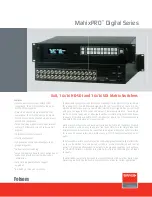
TCP
Transmission Control Protocol uses the Internet Protocol (IP) to exchange messages between
computers. It is known as a connection-oriented protocol, which means that a connection is established
and maintained until messages have been exchanged. TCP divides messages into packets for transfer
via IP and reassembles the packets into complete messages for delivery to the receiving computer.
Common network applications that use TCP include the worldwide web, email, and FTP.
TCP/IP
Transmission Control Protocol/Internet Protocol is one of the core protocols underlying the Internet. The
two protocols are usually referred to as a group, by the term TCP/IP. TCP provides a reliable connection,
which means that each end of the session is guaranteed to receive all of the data transmitted by the
other end of the connection, in the same order that it was originally transmitted without receiving
duplicates.
Telnet
Teletype Network is a terminal emulation protocol that enables the Telnet client to control the Telnet
server and communicate with other servers on the network. To start a Telnet session, users must enter a
valid username and password. After logging in, they can enter commands as if they were working
directly on the server console.
TKIP
Temporal Key Integrity Protocol is an enhancement to
WEP (Wired Equivalent Privacy)
encryption. It
uses a set of algorithms to rotate session keys. The protocol's enhanced encryption includes a per-
packet key mixing function, a
MIC (Message Integrity Check or Code )
, an extended initialization vector
(IV) with sequencing rules, and a re-keying mechanism. The encryption keys are changed (re-keyed)
automatically and authenticated between devices after the re-key interval (either a specified period of
time, or after a specified number of packets has been transmitted).
TLS
Transport Layer Security. See
TLV
An
LLDP (Link Layer Discovery Protocol)
frame that can contain multiple pieces of information. Each
piece is known as a Type Length Value.
TSN
Transition Security Network is a subset of
, which provides an enhanced
security solution for legacy hardware. The Wi-Fi Alliance has adopted a solution called
TSN. RSN and TSN both specify IEEE 802.1x authentication with Extensible Authentication Protocol
(EAP).
UDP
User Datagram Protocol is an efficient but unreliable, connectionless protocol that is layered over IP (as
is
TCP (Transmission Control Protocol)
). Application programs must supplement the protocol to provide
error processing and retransmitting data. UDP is an OSI Layer 4 protocol.
USM
Glossary
ExtremeSwitching 200 Series: Administration Guide
366




































